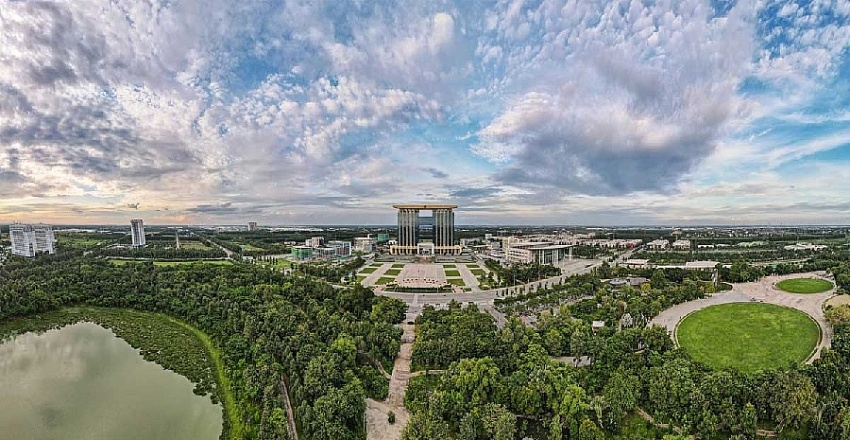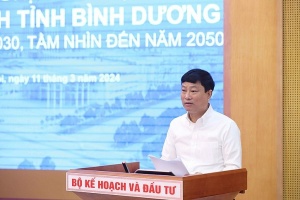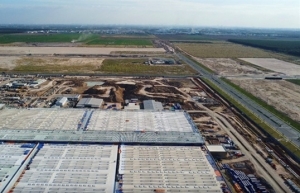Binh Duong to capitalise on rising real estate interest
CapitaLand Development, the development arm of CapitaLand Group, began construction of the Sycamore, its largest residential project so far in Vietnam, in Binh Duong New City last month.
 |
| Binh Duong to capitalise on rising real estate interest |
With a projected total gross development value of over $750 million, the Sycamore offers about 3,500 freehold units across a mix of low, mid, and high-rise residential developments, providing homes for an estimated 13,000 residents. The first phase is scheduled to be completed this year, and the rest of the project is targeting completion by 2027.
Gamuda Land, a property arm of Malaysian group Gamuda, is meanwhile processing Artisan Park, which is strategically located right next to the new administrative centre of Binh Duong province.
Artisan Park is planned to be a commercial-landed housing project, created to become a dynamic shopping and meeting hub. Gamuda Land also envisions the development to be a hotspot for the local real estate market upon completion.
Meanwhile, Becamex Tokyu has kicked off construction of its first high-end condominium project in Binh Duong. Midori Park The Ten is located right in the heart of the Binh Duong New City, and is expected to be completed sometime next year.
The Japanese developer has had an interest in Vietnam for 12 years, with condo projects such as SORA Gardens I and II, The View, Midori Park, and other ventures such as the Hikari Commercial Area and SORA Gardens Shopping Centre.
According to Giang Huynh, deputy director of Savills Vietnam, in 2024 alone, 96 per cent of the future supply of the housing segment in the southern provinces will be recorded in either Binh Duong or Dong Nai.
“However, with a quite rapid development rate in recent years, the supply of secondary apartments has been handed over and the future supply is expected to increase sharply in Binh Duong, creating great competitive pressure for new project,” Huynh said. “This can cause challenges in setting prices for new projects, especially when construction and project development costs are increasing.”
She added that with interest from domestic and foreign investors, such as CapitaLand and Becamex, the Binh Duong market is still receiving many new projects.
“It is expected that primary apartment prices from new projects will increase slightly due to increased development costs, while secondary prices may decrease slightly in the short term due to slow market absorption,” Huynh admitted.
However, Huynh believes that prices will stabilise in the long term when demand increases again. “From a buyer’s perspective, careful evaluation and choosing the right time to invest will be important factors for those interested in this market. Apartment products in Binh Duong and Dong Nai that still maintains competitive prices compared to the Ho Chi Minh City market,” she added.
According to Binh Duong Department of Construction, the southern province currently has 29 industrial parks covering over 12,600 hectares and with an occupancy rate of 90 per cent.
The whole province boasts nearly two million workers from many provinces and cities nationwide and abroad, and so demand for housing is huge.
Le Quang Vinh, head of Housing and Real Estate under Binh Duong Department of Construction, said that the demand and level of interest in housing in the province is still high, due to the new supply of adjacent housing projects being limited.
“This makes these areas attractive destinations for homebuyers. Housing demand in Binh Duong is increasing strong due to industrial development and an increased immigration rate. This creates a stability in market demand and ensures the continued development of the regional real estate market,” Vinh said.
To meet the housing needs for workers, Binh Duong People’s Committee has issued a housing development programme towards 2030. Last year, the province’s average housing area per capita was 31 square metres per person, and the urbanisation rate of the whole province reached 84 per cent. Binh Duong currently has one tier-1 urban area, one tier-2 urban area, three tier-3 urban areas, and five tier-5 urban areas.
 | Binh Duong plans to become favourable destination for investors Leaders of Binh Duong met on March 11 to appraise provincial planning and agreed that to achieve a higher stature, the province should strive to become a bright spot for innovative technology and join global supply chains. |
 | Binh Duong aims to attract investments for new-generation industrial parks This year, Binh Duong province plans to attract 130-140 investment projects to industrial parks (IP), securing 1.2-1.3 billion USD from foreign capital and 1.1-1.2 trillion VND (about 48.535 million USD) from domestic investors. |
What the stars mean:
★ Poor ★ ★ Promising ★★★ Good ★★★★ Very good ★★★★★ Exceptional
Related Contents
Latest News
More News
- JustCo expands business into Vietnam (December 22, 2025 | 17:58)
- Sun Group breaks ground on $2 billion Van Don casino complex (December 19, 2025 | 18:14)
- Rare, beautiful, sustainable: the mark of iconic real estate (December 19, 2025 | 08:00)
- Owner-occupied housing stabilises, paving the way for new growth cycle (December 18, 2025 | 17:04)
- Unlocking urban potential of smart cities (December 18, 2025 | 16:50)
- Green finance offers 'passport' for Vietnamese construction, building materials firms (December 15, 2025 | 08:00)
- Gamuda Land commit long-term investment (December 12, 2025 | 11:49)
- HITC ties up with Evolution to develop AI and hyperscale data centres in Vietnam (December 11, 2025 | 12:09)
- Real estate deals boom via high-profile names (December 08, 2025 | 11:32)
- Industrial segment shaped by M&As (December 08, 2025 | 08:00)

 Tag:
Tag:





















 Mobile Version
Mobile Version